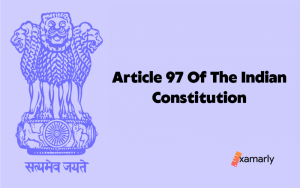Shihabuddin Omar, also known as Shihab al-Din Omar, was a ruler of the Khilji Dynasty, which was one of the most powerful dynasties in the Indian subcontinent during the medieval period. He ruled from 1206 to 1210.
In this article, read about the 3rd ruler of the Khilji Dynasty.
Shihabuddin Omar
He was a nephew of the first ruler of the Khilji dynasty, Jalaluddin Khilji, and he came to power after the death of his uncle.
Overall, he was a significant figure in the history of the Khilji dynasty and the Indian subcontinent, and his reign marked an important period of expansion and cultural development.
You Might Also Like To Read: Art and Architecture of Delhi Sultanate.
Shihabuddin Omar’s Early Life
He was the son of Alauddin Khilji & Malika-i-Jahan, the first wife of Alauddin.
With such a strong background, it is likely that he was raised and educated in a courtly environment and was trained in military and political affairs. He may have also been exposed to the arts and culture of the time, which would have influenced his interests and patronage later in life.
Unfortunately, there is limited information available about his early life.
Shihabuddin Omar’s Ascension to the Throne
He was the fourteenth Sultan of the Delhi Sultanate in India and the third ruler of the Khilji Dynasty. He ruled from January to April 1316.
During Alauddin’s final years, he developed a critical illness, and Malik Kafur, his slave-general, ran the show. Malik Kafur called a gathering of prominent commanders at Alauddin’s bedside after his original successor apparent Khizr Khan was detained at Gwalior on charges of plotting his murder. At this meeting, it was decided that Malik Kafur would serve as the regent and Shihabuddin Omar would succeed his father.
The poet Abdul Malik Isami claimed that Alauddin Khalji was so weak that he cannot speak during the discussion, but everyone there concurred that his quietness should be taken as his assent. Shihabuddin was just over six years old at the time.
Following Alauddin’s passing, on one of the nights in 1316, Kafur called a gathering of key officials (maliks and amirs), and Shihabuddin was chosen as the new ruler. He read the edict from Alauddin, which said that the late Sultan had named Shihabuddin as his heir and cut Khizr Khan out of his will.
The rest of Alauddin’s sons were told to kiss Shihabuddin’s feet. The sons included Abu Bakr Khan, Shadi Khan, Muhammad Khan, Usman Khan, Qutb-ud-din Mubarak Shah, and Farid Khan, .
Shihabuddin Omar’s Reign As the Sultan
Shihabuddin’s involvement in administration during Kafur’s brief reign was restricted to his attendance at a quick court ceremony that Kafur held every day. Some sources say that after the events, Kafur held separate meetings with each officer and sent Shihabuddin to see his mother.
Kafur got the sons of Alauddin Khilji blinded. This way, Shadi and Khizr Khan, couldn’t ever try to ascend to the throne in any way.
Malika-i Jahan as well as Prince Mubarak Shah, were both imprisoned. Firishta, a historian from the 16th century, records that Kafur wed Shihabuddin’s mother after Alauddin’s death. It’s likely that Kafur chose to become the new Sultan’s stepfather in order to establish his authority.
As a result of Kafur’s conduct against the family of Alauddin (their late master), the former bodyguards of Alauddin killed him. Mubarak Shah, the first chosen to serve as the regent, was set free by Kafur’s assassins.
During his reign, Shihabuddin Omar faced several challenges, including rebellions from various members of his own family and the threat of invasion from the neighboring kingdoms.
Despite these challenges, Shihabuddin Omar was known for his military prowess and his successful campaigns against the Hindu kingdoms in the north.
One of the major achievements of Shihabuddin Omar’s reign was his expansion of the territories of the Khilji dynasty. He conquered new lands and added them to his empire, thereby increasing the power and influence of the Khilji dynasty.
Shihabuddin Omar was also known for his contributions to the arts and architecture. He was a patron of several artists and builders, and several monuments and buildings were constructed during his reign, including the Alai Darwaza, which is considered one of the finest examples of Indo-Islamic architecture.
In addition to his military and cultural achievements, Shihabuddin Omar was known for his administration and governance. He implemented policies that improved the lives of his subjects and maintained stability and order in his kingdom.
Mubarak Shah captured Shihabuddin in April 1316 and succeeded him as Sultan. Shihabuddin Omar was then relocated to Gwalior Fort & died later that year.
Summary
Shihabuddin Omar was a ruler of the Khilji dynasty who ruled from 1206 to 1210. He implemented policies that improved the lives of his subjects and maintained stability and order in his kingdom.
Though short-lived, his reign was marked by expansion, military success, cultural patronage, and good governance, making him an important figure in the history of the Khilji dynasty and the Indian subcontinent.
You might also like to read about the Delhi Sultanate Dynasty.
FAQs about Shihabuddin Omar
Who was Shihabuddin Omar?
Shihabuddin Omar was a ruler of the Khilji dynasty who ruled from 1206 to 1210. He was a nephew of the first ruler of the Khilji dynasty, Jalaluddin Khilji, and was known for his military prowess, contributions to the arts and architecture, and good governance.
What were the major achievements of Shihabuddin Omar’s reign?
Shihabuddin Omar’s major achievements include the expansion of the territories of the Khilji dynasty through conquests, his contributions to the arts and architecture, and his implementation of policies that improved the lives of his subjects and maintained stability and order in his kingdom.
Was Shihabuddin Omar a successful ruler?
Yes, Shihabuddin Omar was considered a successful ruler. He faced several challenges, including rebellions from members of his own family and the threat of invasion from neighboring kingdoms, but he was able to overcome these challenges and achieve military success, cultural patronage, and good governance.
What was the legacy of Shihabuddin Omar’s reign?
The legacy of Shihabuddin Omar’s reign includes his contributions to the arts and architecture, such as the construction of the Alai Darwaza, and his expansion of the territories of the Khilji dynasty. He was also known for his good governance and his efforts to improve the lives of his subjects, making him an important figure in the history of the Khilji dynasty and the Indian subcontinent.
What was Shihabuddin Omar’s background?
Shihabuddin Omar was a nephew of Jalaluddin Khilji, the first ruler of the Khilji dynasty, and was born into a family of Turkish origin that had migrated to India.






